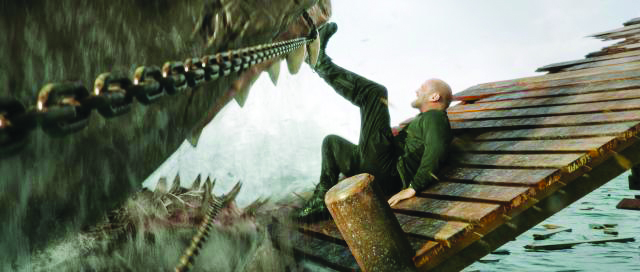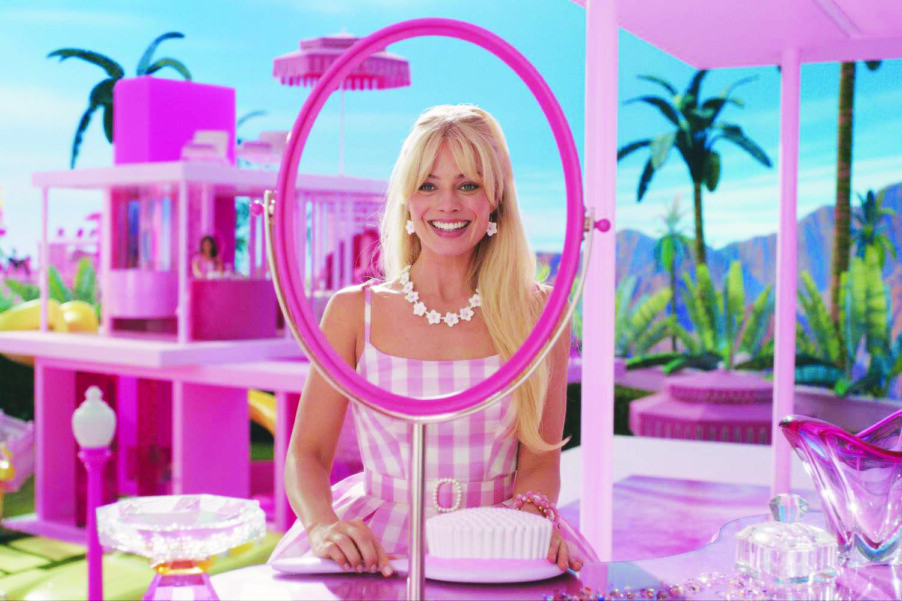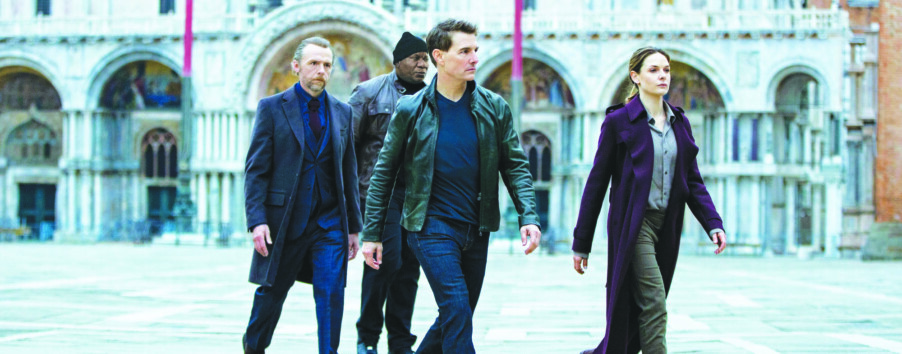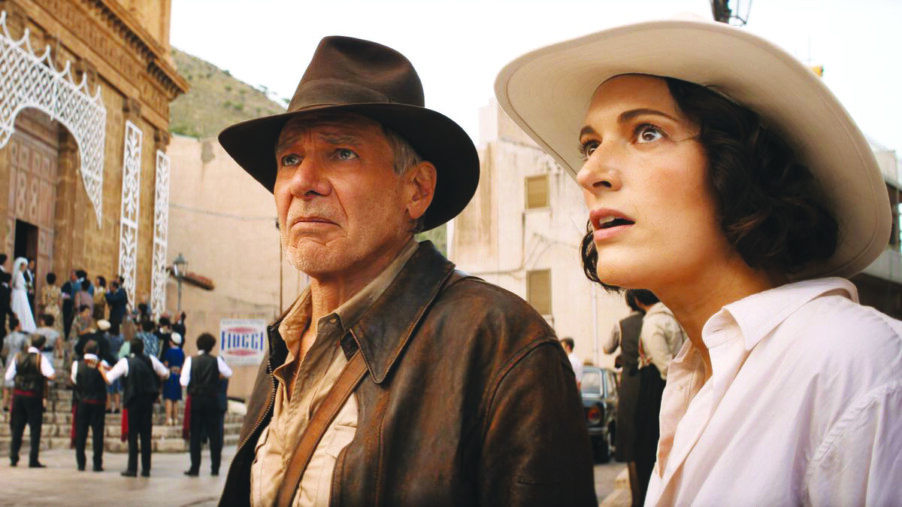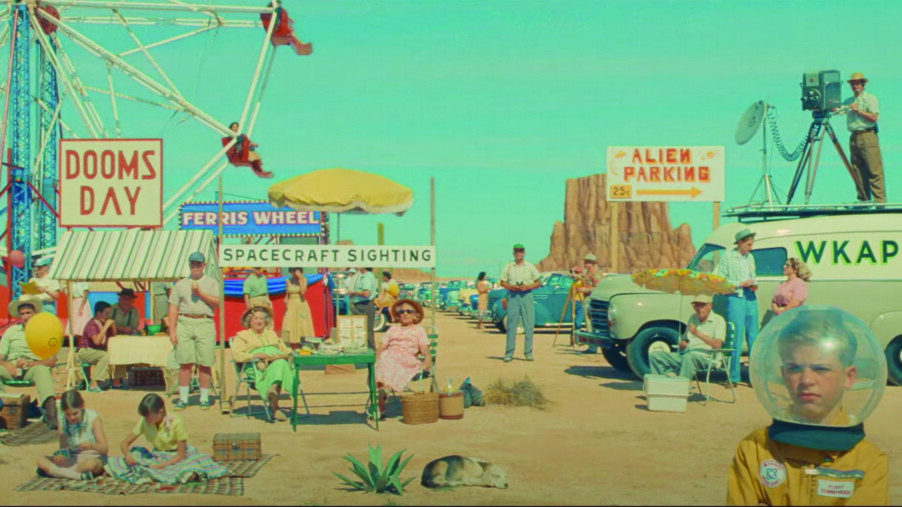The blond, permanently tip-toed Stereotypical Barbie visits the decidedly un-pink human Real World of Los Angeles in Barbie, another win for director and co-writer Greta Gerwig.
In Barbieland, pink — particularly that very specific Barbie hot-pink — abounds, with a pink wardrobe ready for Barbie (Margot Robbie) in her Dream House closet at the start of every day, perfect to wear while driving around in her pink car, waving to her other friends named Barbie, a bunch of Kens and the occasional one-off, like Ken’s skittish friend Allan (Michael Cera) or the discontinued pregnant Midge (Emerald Fennell). Except for our heroine, the Barbies of Barbieland have empowering jobs — President Barbie (Issa Rae), Scientist Barbie (Emma Mackey), Writer Barbie (Alexandra Shipp), Lawyer Barbie (Sharon Rooney), a whole slate of Barbie Supreme Court justices, a mermaid (Dua Lipa) — which, as the narrator (Helen Mirren, who is just chef’s kiss with every line delivery) informs us has helped the girls and women of the Real World reach their full feminist potential and solved all the problems of sexism forever. The Kens of Barbieland are all just sorta Ken — Ken’s job is “Beach” and there seem to be opposing Ken cliques, of which Ken (Ryan Gosling), who is in love with Barbie (Robbie), and Ken (Simu Liu), seem to be the leaders. Gosling’s Ken is particularly desperate for Barbie’s affection and notice. Whereas Barbie finds Ken to be a kind of unnecessary accessory.
All the Barbie empowerment doesn’t apparently come with a lot of introspection, because when Barbie suddenly has thoughts of death, she doesn’t know what to do with them. The thoughts of death seem to quickly metastasize into other problems, like morning breath, cellulite and, most horrifying of all, flat feet. Barbie goes to see Weird Barbie (Kate McKinnon), a Barbie permanently in the splits with a “kid just learning to use scissors” hair cut, to get advice on what to do. Weird Barbie tells Barbie that the answer is to find the girl who is playing with her and whose sadness must be leaking to Barbie’s subconscious. With the help of this girl and Mattel, Barbie will be able to fix the ruptured membrane between Real World and Barbieland. To accomplish this, Barbie will have to go to the Real World, a trip that involves several wardrobe and Barbie vehicle changes. Because he doesn’t seem sure he can exist without her, Ken tags along.
Most of this plot is revealed in the trailer and it’s fun to go in not knowing a whole lot more. I’ll give these extra notes: In the Real World, Barbie meets Gloria (America Ferrera) and her sullen middle-school-ish daughter Sasha (Ariana Greenblatt) and Ken discovers the Patriarchy, which may or may not have something to do with horses and Sylvester Stallone in fur coats.
I came into this movie a hardcore Greta Gerwig fan; I think her Lady Bird and Little Women are basically perfect movies. But I’d argue as much as this predisposed me to like this movie, I was also worried that this wouldn’t be up to that Gerwig standard.
Well, it is and I loved it — loved it so much I seriously considered watching it again immediately. Loved it so much I looked up the price of the official Gloria doll (it’s $50, which would be worth it if I could figure out how to send it back in time to my 9-year-old self). Loved it in a way that is both un-ironic and deeply appreciative of how wall-to-wall weird this movie is. Barbie is deliciously weird, even in its genuine emotional moments, right up until its very last second. And I loved, like those other Gerwig movies, that this movie tells a story of a mother-daughter relationship, this time going surprisingly deep in a short amount of screentime on the mother’s perspective.
If I can start making some Oscar picks now: Of course I choose Gerwig to get a director nod and a screenplay nod along with her partner (in this screenplay and in life) Noah Baumbach. I also put forth Ferrera, for a good all-around performance plus maybe two scenes that had me worrying I was about to cry in a packed movie theater. (I also did a fair amount of big out-loud guffaw laughing.)
And for Best Actor let me suggest Gosling, who is just absolutely going for it with his needy, addled, emotional Ken. He is so thoroughly game for anything in this role and absolutely appears to be having a ball.
Robbie by comparison can at times seem flatter than her supporting characters — but I think this is intentional and it ultimately pays off with what the movie is trying to do with her character. She’s able to bring genuine emotion and humanity to her character while still having a doll-like rigidity (both physically and in her thinking), at least for a while.
In smaller roles, Mirren is note perfect, Rhea Perlman has a great part that is surprisingly touching and Will Ferrell as the head of Mattel takes his The Lego Movie character Lord Business and pushes it to an even weirder place.
The movie also looks amazing, both in its set design and in the way the characters move through Barbie Land. Similar to how the Lego movies use the visuals of the Lego toys, their movements and their accessories to give layers to the jokes and the way the world is built, this movie uses Barbie’s physicality, the elements of her dream houses and fashions and fun little notes about how kids play Barbies both for humor and to build its characters. It’s fun but also smart and it makes you appreciate the work that went in to this movie while still making it look seamless. A+
Rated PG-13 for suggestive references and brief language, according to the MPA at filmratings.com. Directed by Greta Gerwig with a screenplay by Greta Gerwig and Noah Baumbach, Barbie is an hour and 54 minutes long and distributed in theaters by Warner Bros.
Oppenheimer (R)
Cillian Murphy is the titular physicist who becomes the “father of the atomic bomb” in Oppenheimer, a three-hour biopic and meditation on nuclear weapons from Christopher Nolan.
The movie loops around, primarily in three time frames: J. Robert Oppenheimer (Murphy) as he builds his career as a noted physicist, pushing the field into new realms of theoretical physics, and becomes the head of the U.S. efforts to build an atomic bomb; Oppenheimer in the early 1950s facing a hearing to keep his Atomic Energy Commission security clearance, and Lewis Strauss (Robert Downey Jr.), a professional opponent of Oppenheimer’s in the post-war years, facing his own U.S. Senate confirmation hearing.
In the security hearing, Oppenheimer faces criticisms for some of his pre-war connections to communist party groups, including his affair with Jean Tatlock (Florence Pugh), a party member he dated before and during his marriage to Kitty (Emily Blunt), who was herself married to someone else when their relationship started. In those 1930s scenes, we also see Oppenheimer and other scientists follow the news about German scientists and their experiments with nuclear fission. When the U.S. enters World War II and decides to build its own atomic weapons program, Lt. General Leslie Groves (Matt Damon) charges Oppenheimer with running the overall program and setting up the Los Alamos, New Mexico, middle-of-nowhere lab/makeshift town where all of the country’s efforts to build the weapon will converge and where, out in the desert, the weapon can eventually be tested. Scientists will need to be in New Mexico for the duration, and the existence of a town allows them to bring their children and wives, many of whom also have scientific backgrounds.
For all that the scientists are sort of dazzled by the puzzle of building an atomic bomb, it’s really the “we have to make one before the Nazis do” motivation that gets many of the scientists past their unease with the weapons. Oppenheimer is driven by both the science and the Nazi-beating but beyond that his feelings about the weapons he’s building seem more complicated.
In the Strauss hearing scenes, we see how Strauss’ attempts to torpedo Oppenheimer’s influence in the scientific community and the U.S. nuclear weapons program (where Oppenheimer seems to want to go slower than the ever-one-upping of the arms race) after the war lead to his own political problems. Downey gives a solid performance here but I’m not entirely sure why this layer was added. In addition to a needless padding of the runtime, it adds an element of earnestness and naiveté about politics that feels sorta goofy in this movie that already has a fair amount of “oh no, is our horrible invention going to be horrible for humanity?” silliness. On the one hand, the movie paints a fairly complex picture of a time (the 1930s) when pro-labor efforts, the fight against fascism in Spain, domestic social issues and the American communist party slosh around together, and when women play this sort of one-step-forward three-steps-back role, with highly educated women chafing against the homemaker role marriage seems to shove them in. And we see bits of scientists wrestling with the idea that developing the atomic bomb is an existential necessity (especially the scientists who are refugees of Nazi aggression) but also an existential threat.
But then we get elements that feel more black-and-white (sometimes literally going to black-and-white footage) and take us to, like, West Wing: Mid-Century and seem to suggest that these people who have been through a depression, international political upheaval, war and into the McCarthy era are unaware that cynicism, pettiness or moral compromise exist in politics.
All that said, Murphy gives a wonderfully agonized performance as an Oppenheimer who is self-aware and yet also self-deluding. He does a good job of showing us a man who is permanently shaken by what he’s done.
And the movie looks great — the explosions it makes so much of in the trailers are actually not as impressive as the vastness of the New Mexico desert and the way it shows us Los Alamos popping up from nothing. That part of the story — the pre-war scientific and political landscape through the Trinity test — is really well-drawn, with lots of texture and details you want to dig in to (like the women who get a chance to work in Los Alamos because they already have security clearances via their husbands, or the small professional world of the pre-war physicist community and their various alignments to the U.S./U.K., the Nazis or the Soviets).
Oppenheimer could have benefited from a cleaner, more streamlined approach to its story but it is nevertheless packed with good performances and standout bits of story. B+
Rated R for some sexuality, nudity and language, according to the MPA on filmratings.com. Directed by Christopher Nolan with a screenplay by Christopher Nolan (based on the book American Prometheus: The Triumph and Tragedy of J. Robert Oppenheimer by Kai Bird and Martin J. Sherwin), Oppenheimer is three hours long and is distributed in theaters by Universal Studios.
Featured photo: Barbie.

